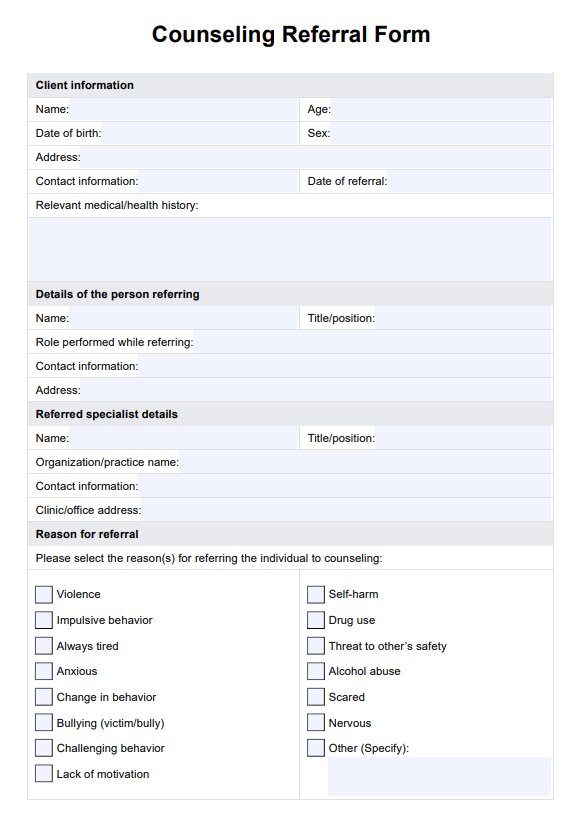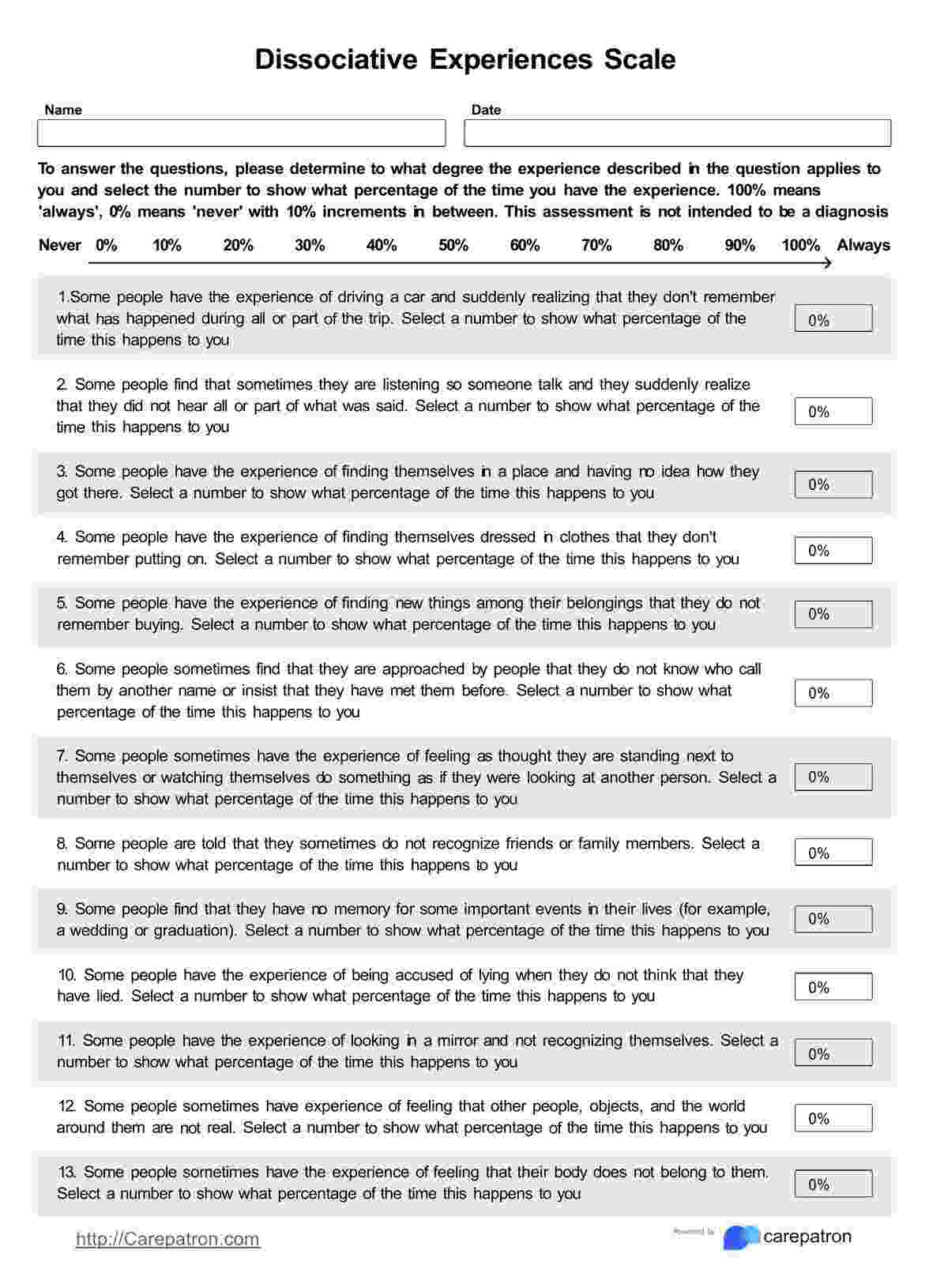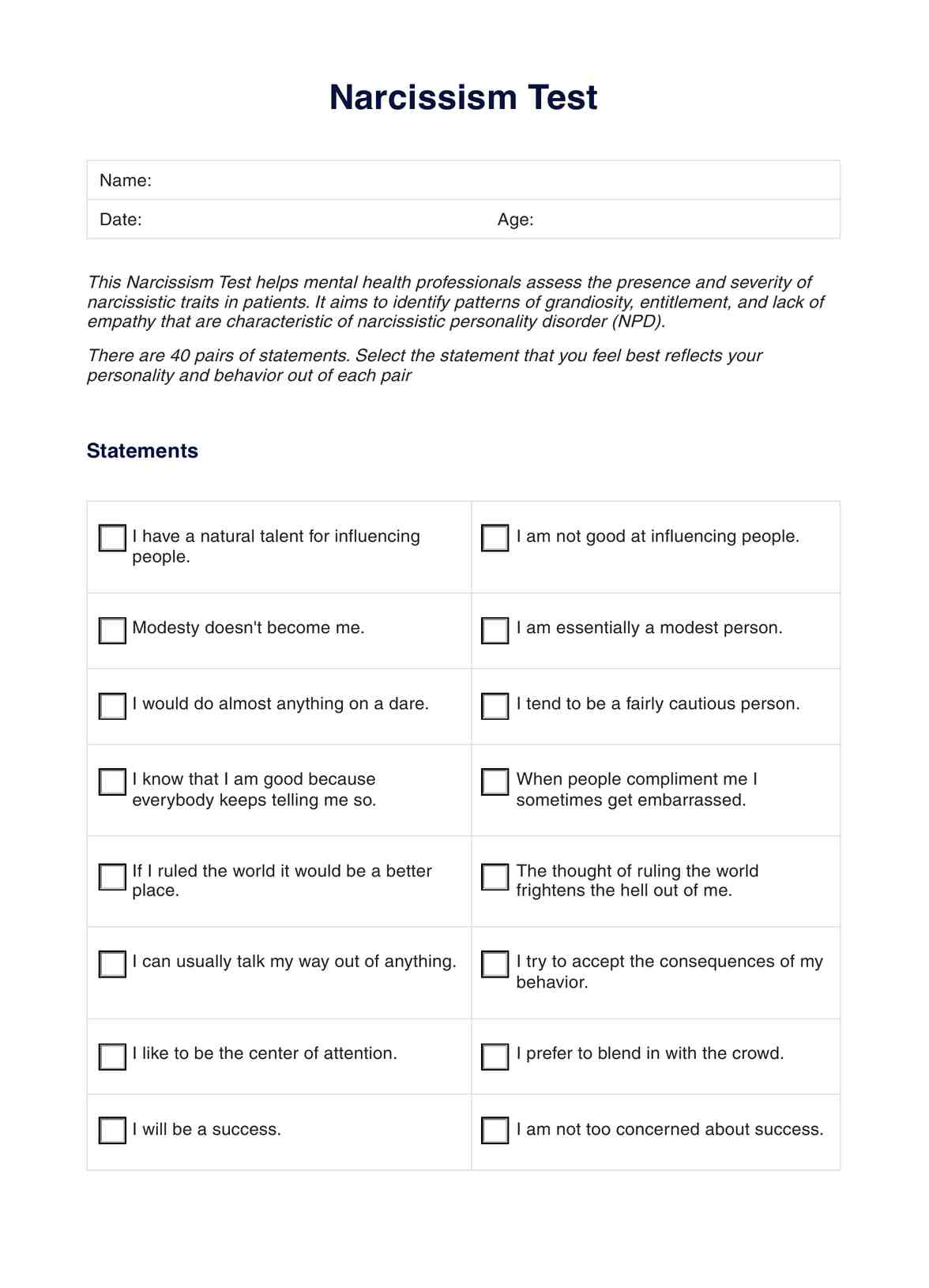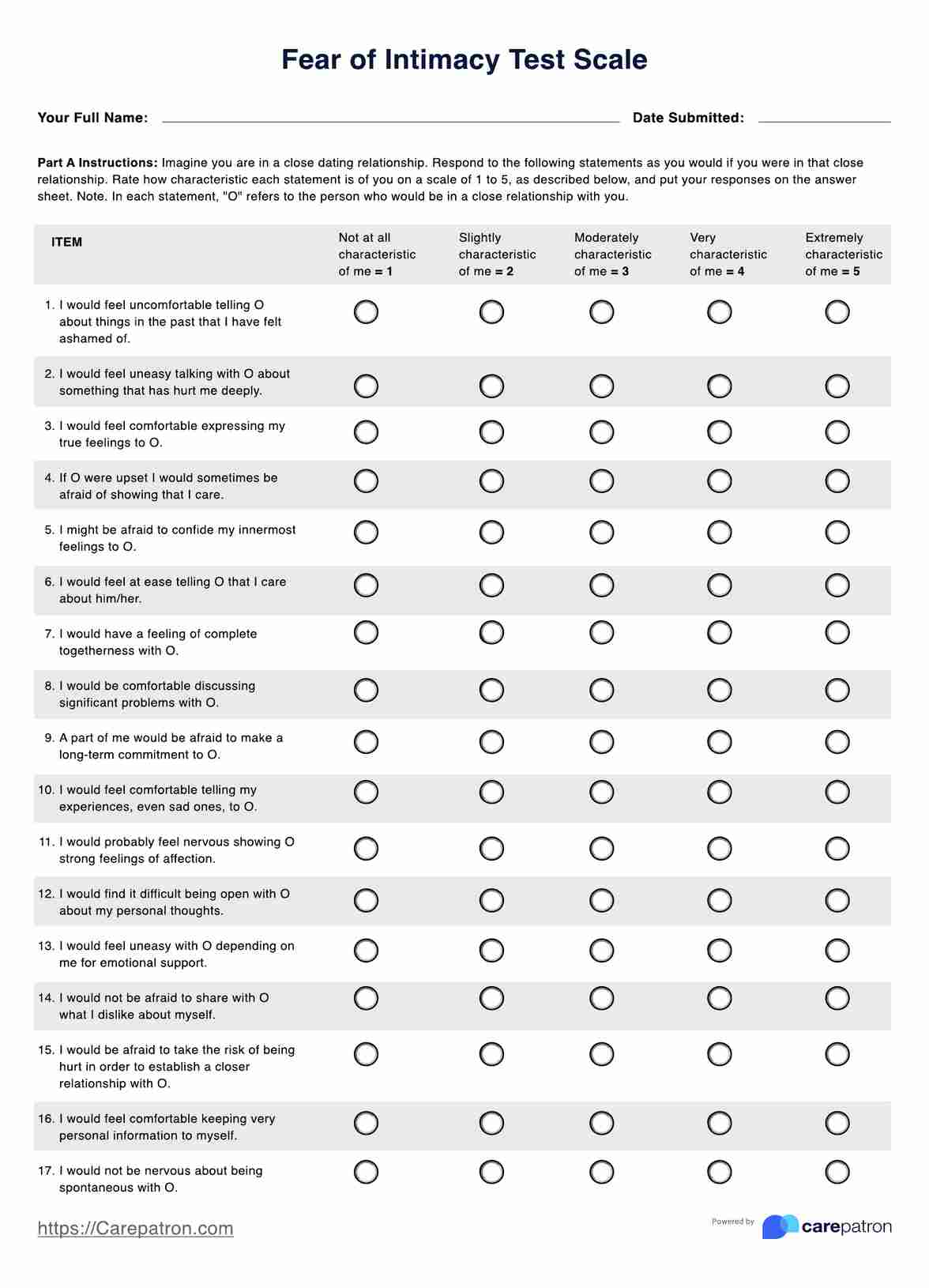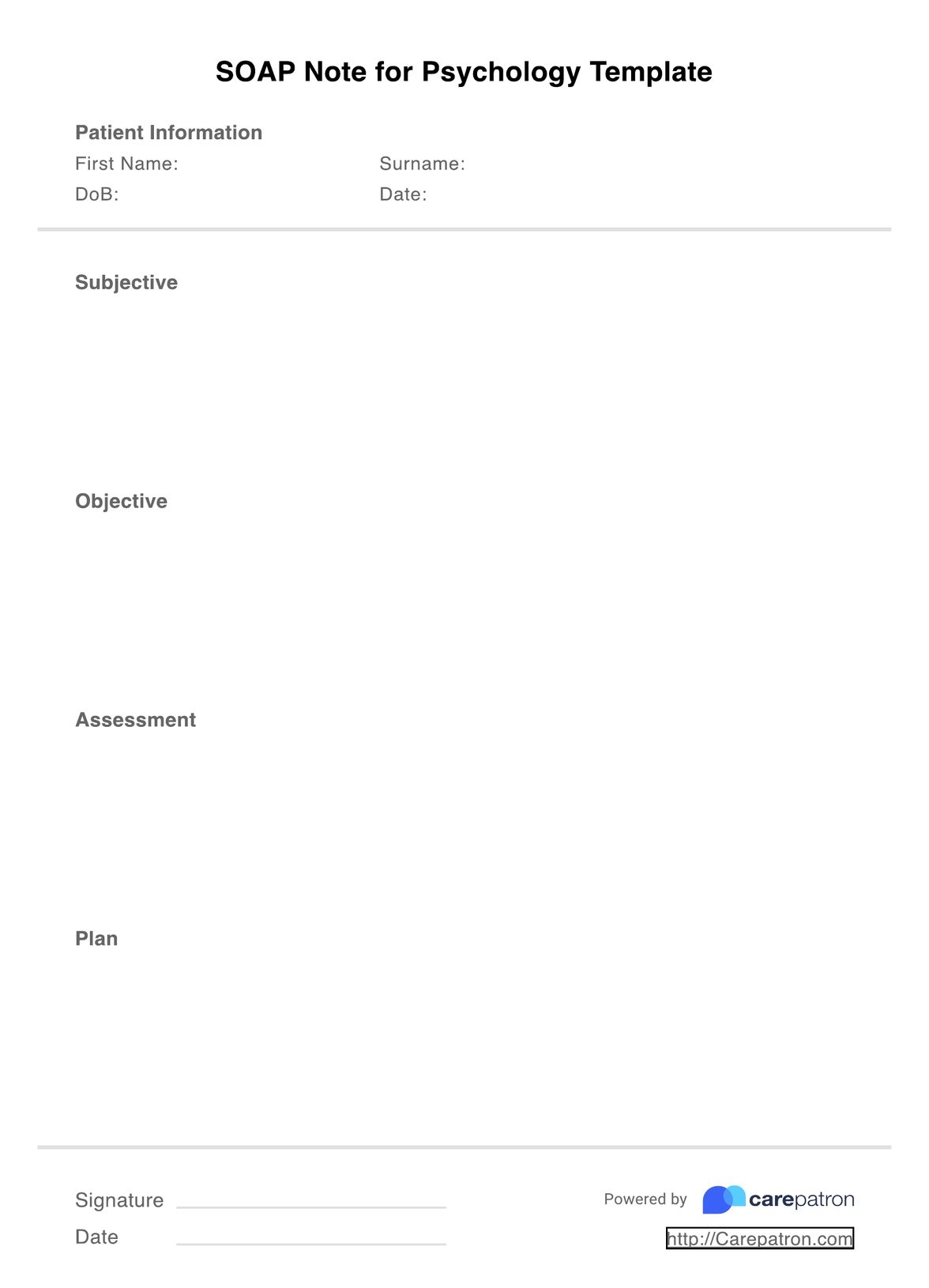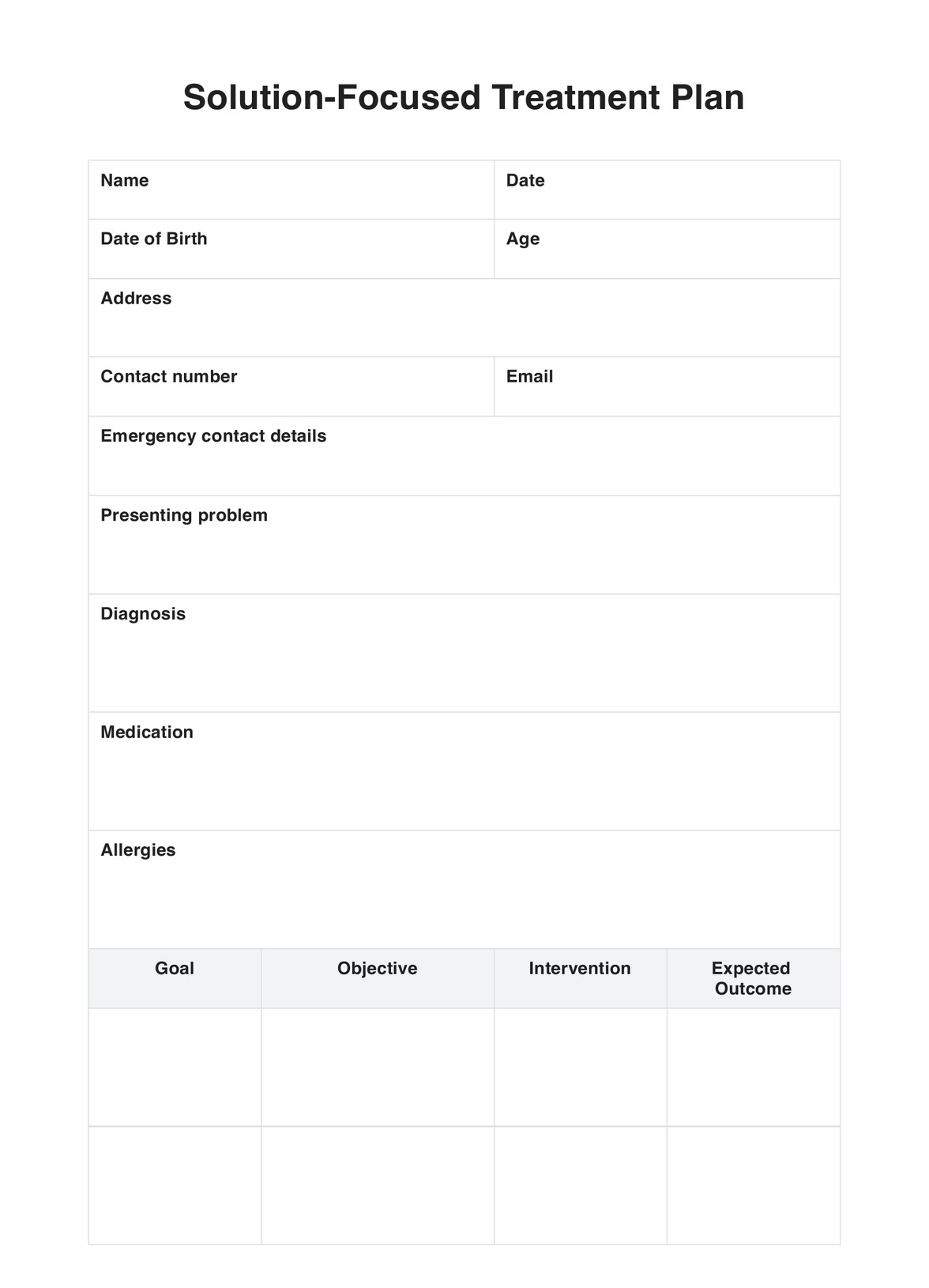Clinical Evaluation
Explore the process of conducting clinical evaluations and its importance in the therapeutic process. Access a free Clinical Evaluation template to help you get started.


What is a Clinical Evaluation?
A clinical evaluation is a fundamental step in mental health care. This initial and ongoing process provides therapists and mental health professionals with resources to understand a client's emotional, psychological, and behavioral states. For those offering guidance and those seeking understanding, clinical data from this evaluation lays the groundwork for effective treatment plans. Through a series of assessments and conversations, this evaluation gathers essential information to develop a personalized treatment plan.
Clinical Evaluation Template
Clinical Evaluation Example
Clinical Evaluation process
The initial clinical evaluation is the crucial step in effective mental health treatment. This process gathers essential information about a client's unique needs and sets the stage for a collaborative therapeutic journey. The following are the key components of a comprehensive clinical evaluation:
Understanding the current situation
The evaluation begins with exploring the client's current struggles and reasons for seeking therapy. This might involve discussing symptoms, their impact on daily life activities (such as work, relationships, sleep), and any recent life stressors.
The therapist will then ask questions about the client's overall history, including education, employment, and living situation. This context helps us understand potential contributing factors to current challenges.
Exploring past mental health
Understanding a client's past diagnoses, previous treatments, and family history of mental illness provides valuable context for the therapist. This information can help identify patterns and potential risk factors. With the client's permission, reviewing medical records can offer insights into any co-occurring medical conditions that might impact mental health.
Assessing mental and emotional state
The therapist then conducts structured or semi-structured interviews to assess the client's mood, thought patterns, and overall emotional state. Depending on the client's situation and the therapist's judgment, standardized psychological tests might be used to assess mood, personality traits, and cognitive functioning. These results can offer additional objective data to support the clinical interview findings.
Assessing strengths and resources
A crucial aspect of the evaluation is identifying a client's strengths, coping skills, and support systems. Building on these resources empowers clients to participate actively in their recovery journey. Exploring a client's social support network (family, friends, social groups) can also help identify potential sources of support and potential stressors within the social environment.
How to use the template
Clinical evaluation is a vital component of the therapeutic process. It aids therapists and clinicians in creating a detailed picture of a client's mental health. A template for clinical evaluation standardizes this process, ensuring no critical information is missed as you do clinical investigations. The following steps ensure that our Clinical Evaluation Template is used effectively and empathetically.
Step 1: Preparation
Before meeting the client, take time to familiarize yourself with the template. Understanding each section’s purpose helps ask more precise questions and smooth the process. Make sure the environment is conducive to sharing sensitive information. Reinforce the confidentiality of the session to put the client at ease.
Step 2: Gathering information
Start with the basics. Record the client's age, gender, employment status, and living situation. This builds a foundation for understanding their social context. Then, ask the client to describe what brings them in. Note specifics of any symptoms, behaviors, or emotions concerning them.
It is also essential to inquire about any previous mental health diagnoses, treatments, or hospitalizations. It’s also crucial to ask about any family history of mental illness. Attempt to gather information and understand any physical health issues or medications that could influence mental health. Ask about their sleep patterns, appetite, and energy levels.
Step 3: Assessment of symptoms
Where appropriate, use validated screening tools included in the template for symptoms like depression or anxiety. This provides a standardized method to evaluate the severity of symptoms. We can also take note of the client's behavior, mood, and interaction style during the evaluation. Nonverbal cues can provide valuable context. It's essential to have sufficient clinical evidence to support any diagnoses to be made.
Step 4: Risk assessment
Evaluate any potential for harm to self or others. Document any suicide ideation, plans, or previous attempts, and create a safety plan if necessary.
Step 5: Diagnostic impressions
Review the information gathered and compare symptoms against diagnostic criteria to form a preliminary diagnosis. Consider other conditions that might explain the symptoms to ensure a comprehensive evaluation.
Step 6: Treatment planning
Work with the client to set achievable goals for therapy based on the evaluation. Outline the treatment modalities and interventions that would be most effective for their situation and gain consent to proceed. If needed, plan for any referrals to specialists, such as psychiatry, for a comprehensive approach to treatment.
Step 7: Documentation and follow-up
Ensure all findings, decisions, and plans are clearly documented in the client's record according to privacy laws and ethical guidelines. We can also arrange a follow-up session to reevaluate progress and make any necessary adjustments to the treatment plan. This can also help gather any additional clinical data needed that were not initially covered.
Objectives of a Clinical Evaluation
The clinical evaluation serves as the foundation for effective mental health treatment. It's a crucial initial step that gathers comprehensive information about a client's unique needs and sets the stage for a collaborative therapeutic journey. Here, we'll explore the core objectives of a clinical evaluation:
Accurate diagnosis
The primary objective of the evaluation is to arrive at an accurate diagnosis of the client's mental health condition. Through a comprehensive assessment, the therapist can identify the most likely diagnosis based on the client's reported symptoms, history, and test results if administered. An accurate diagnosis allows for developing a targeted treatment plan that directly addresses the underlying issues.
Personalized treatment planning
Beyond diagnosis, the evaluation aims to understand the client's individual needs, strengths, and challenges. This information is crucial for developing a personalized treatment plan that is tailored to the client's specific situation and goals. The therapist will consider factors such as the severity of symptoms, the client's personality, and their preferred treatment approach.
Building a collaborative relationship
The clinical evaluation process fosters open communication and collaboration between the therapist and the client. By actively listening to the client's experiences and asking clarifying questions, the therapist builds trust and rapport. This collaborative environment is essential for successful therapy, as clients feel empowered to participate actively in their recovery journey.
Establishing baseline information
The information gathered during the evaluation is a baseline for tracking progress over time. By comparing the client's initial state to their ongoing assessments, the practitioner can measure the effectiveness of the treatment plan and make adjustments as needed. This ongoing evaluation ensures the therapy remains relevant and addresses the client's evolving needs.
How to prepare a Clinical Evaluation report
The clinical evaluation report is a critical roadmap for your client's mental health treatment journey. It documents your findings from the initial assessment and sets the stage for ongoing care. Here's a step-by-step guide to help you create a comprehensive and informative clinical evaluation report:
Step 1: Gather and organize information
Write the client's background. This section includes basic details like the client's name, date of birth, and contact information. Document the client's presenting concerns and any specific goals they might have for therapy. It is important to also include a concise overview of the client's past diagnoses, previous treatments, and family history of mental illness.
Then, summarize the key findings from your clinical interviews and any administered psychological tests. Organize this section by areas assessed, such as mood, thought patterns, cognitive, and social functioning. Finally, highlight the client's strengths, coping skills, and social support network. This information is crucial for building a strengths-based treatment plan.
Step 2: Diagnosis and formulation
Based on the gathered information, the most likely diagnosis is clearly stated according to the current edition of the Diagnostic and Statistical Manual of Mental Disorders (DSM-5). Briefly explain the factors contributing to the client's current mental health state. This might include biological, psychological, and social factors.
Step 3: Treatment plan
After the diagnosis, it's time to outline specific, measurable, achievable, relevant, and time-bound (SMART) goals for therapy, collaboratively developed with the client to reflect their unique needs and desires. You can also specify the type of therapy you will use (e.g., cognitive-behavioral therapy, psychodynamic therapy) and explain how it aligns with the diagnosis and treatment goals. The plan should also include the frequency and duration of therapy sessions. This may need to be adjusted based on the client's progress.
Step 4: Review and finalization
Finally, carefully review your report for accuracy, clarity, and completeness. Ensure all information is presented in a professional and organized manner. Depending on your practice and the client's preferences, you may choose to share the draft report with the client for review and discussion. Once finalized, store the report securely in your Electronic Health Records (EHR) and in accordance with HIPAA regulations.
Commonly asked questions
A clinical investigation is a research study where a product or service, like a medical device or medication, is directly tested on people to assess its safety and performance. Think of it as a real-world experiment. This can then result in clinical studies that might be needed for regulatory requirements or to provide evidence for its clinical benefits. A clinical evaluation, in the context of clinical psychology, gathers existing information to assess a client's state to determine a diagnosis, if any, and determine a treatment plan after.
A qualified mental health professional, such as a licensed therapist or psychiatrist, should conduct the clinical evaluation. They have the training and experience to gather and interpret the necessary information.
The clinical evaluation is crucial as it helps accurately diagnose mental health conditions. It also allows for the development of a personalized treatment plan tailored to the client's specific needs. Furthermore, a deeper clinical study fosters clear communication and collaboration between therapist and client. This also establishes a baseline for tracking progress over time.


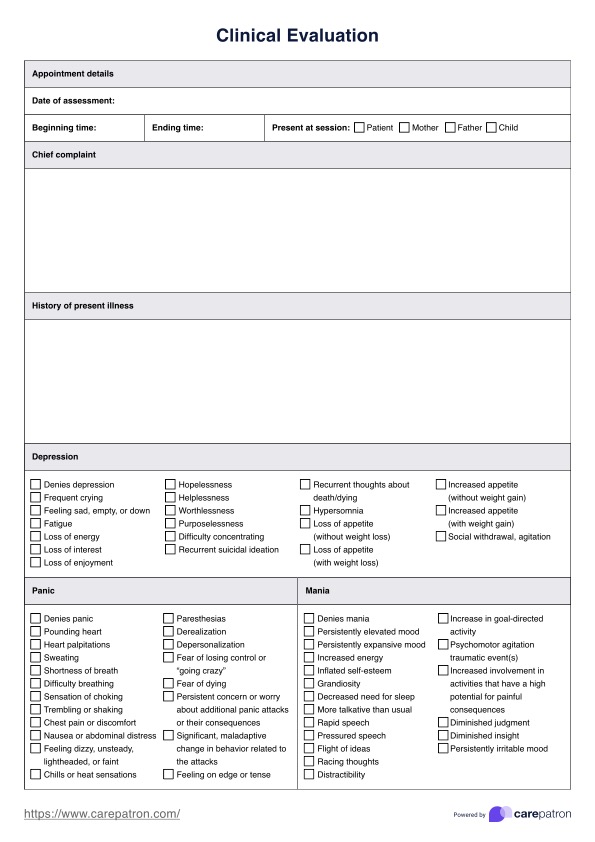
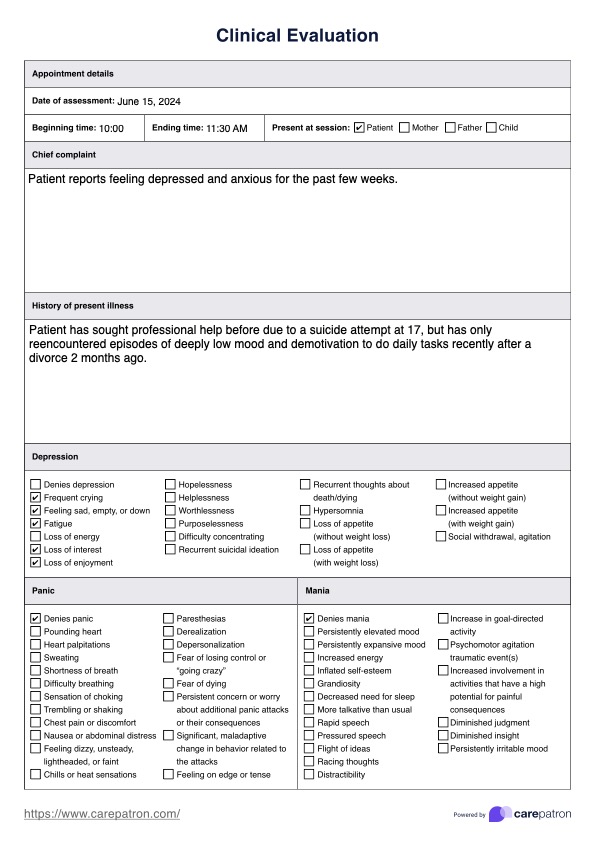

















-template.jpg)



















































































